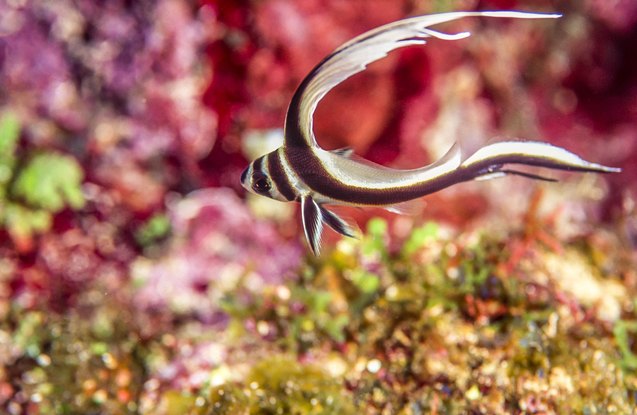Drum Fish


About Drum Fish
There are several species of fish that carry the “drum” name, though they are not all members of the same genus. The Black Drum and the Red Drum are the two main species of Drum Fish and they are both members of the family Sciaenidae. These fish are very large, with some specimens growing upwards of 90 pounds. Because these fish are carnivorous they should not be kept with fish that are small enough to be viewed as prey. They can, however, get along with other non-aggressive species of similar size.
There are several species of fish that carry the “drum” name, though they are not all members of the same genus of Drum Fish.
Different species of drum come from different areas but they generally inhabit the lower levels of the water column in brackish to saltwater environments.
With more than 250 species of drums, these fish exhibit a wide range of colors and patterns. Many of the drum species which serve primarily as game fish are dull in coloration with few markings. Some of the popular aquarium species, however, like the Spotted Drum exhibit bold colorations such as thick black and white bars.
The aquarium requirements of drums varies from one species to another. For example, the Black Drum tends to inhabit brackish waters and should therefore be kept in this type of environment. The Spotted Drum, on the other hand, is a marine species that should be kept in warm waters (72°F to 78°F) with moderate hardness between 8 and 12 dKH with a slightly alkaline pH between 8.1 and 8.4. Most drums are benthic feeders so they need plenty of open space along the bottom of the tank but you can decorate sparsely with live rock.
With more than 250 species, drum fish exhibit a wide range of colors and patterns.
Most drums are carnivorous fish, feeding on a variety of meaty foods like worms, shrimp, crustaceans, and small fish. In the home aquarium these fish should be offered a wide variety of meaty foods including fresh and frozen foods as well as mysis shrimp, brine shrimp, worms, and small fish.
Also read: Setting a Schedule for Routine Tank Maintenance
Drums are egg layers and they tend to spawn their eggs over sandy substrate. In most cases, drums do not exhibit any parental care.
There are roughly 275 species of fish belonging to the drum family Sciaenidae and they are divided among 70 different genera. Drums are primarily cultivated for food, though there are a few smaller species which can be kept in the home aquarium. Some of the most common species of drum include the following:
- Spotted Drum (Equetus acuminatus)
- Black Drum (Pogonias cromis)
- Red Drum (Sciaenops ocellatus)
- Longfin Drum (Umbrina dorsalis)
- Pacific Drum (Larimus pacificus)
- Spotfin Drum (Roncador stearnsi)
- Yellow Eye Drum (Odontoscion xanthops)
Photo credit: johnanderson/Bigstock; Mike Bauer/Shutterstock

Kate Barrington is the loving owner of two cats (Bagel and Munchkin) and a noisy herd of guinea pigs. Having grown up with golden retrievers, Kate has a great deal of experience with dogs but labels herself a lover of all pets. Having received a Bachelor's degree in English, Kate has combined her love for pets and her passion for writing to create her own freelance writing business, specializing in the pet niche.
More by Kate Barrington
























